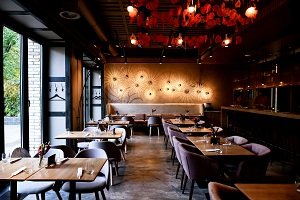
Pollution Concerns for Restaurants
There are a number of activities conducted at restaurants that could increase the potential for environmental exposures. One of those activities includes the disposal of food, which according to the Environmental Protection Agency (EPA) ends up in landfills and incinerators, affecting local air and water quality. So much so, that the EPA has developed programs that will provide assistance to food establishments to reduce their waste. But these are not the only exposures that restaurants face―problems may also stem from ownership/property maintenance; kitchen activities, including cleaning chemical use and grease traps; and engineering functions such as fuel tanks and carbon monoxide from boiler rooms, furnaces, or water heaters.
Here are examples of how restaurant activities can become environmental concerns:
- Improper cleaning of equipment may be a source of microbial contamination, such as mold, if the equipment is not disinfected properly. Chlorine mixtures are often used to disinfect surfaces; however, if food residues are still present on surfaces or if the chlorine mixtures are too acidic, this may reduce the efficacy of these mixtures. Although chlorine antimicrobial activity may increase at higher temperatures, chlorine mixtures may release chlorine gas which is toxic and cause bodily injury to patrons or corrosion of equipment.
- Maintenance chemical spills and the lack of emergency control plans may be a source of environmental concern. Chlorine mixtures, used for treating cooling water or oils, fuels, lubricants, paints, and cleaning chemicals could be released into drains. Over time, they may impact soil or groundwater in the vicinity of the food establishment.
- Accidental releases of refrigeration or chiller chemicals, such as ammonia, hydrofluorocarbons (DFCS), or chlorofluorocarbons (CFCs), may cause injury to employees, patrons, or surrounding populations if released in high concentrations. Refrigerants that contain certain grades of HFCs or CHFCs could be released either during the service, repair, maintenance, or disposal of refrigeration units. Under Section 608 of the Clean Air Act, stationary refrigeration units have to be serviced by Environmental Protection Agency (EPA) technicians and are subject to specific EPA requirements for leak repair. When these units are entered into the final waste stream, the final entity in the chain has to make sure that refrigerants are removed prior to appliance disposal.
- Potable drinking water may be delivered through pipes that contain lead which may adversely impact anyone who drinks the water.
- Carbon monoxide may be released from fuel fired devices including ovens and boilers.
- Food grease may be released through sewers or storm drains. In some cases, the trapped grease can cause the sewers to clog and subsequently a buildup of hydrogen sulfide gas can result. Very often, storm drain pipes lead directly to local water bodies with no treatment. There have also been a number of legal cases related to odors emanating from restaurants. In some cases the restaurant owners sought relief for their claims under their General Liability policies and the courts decided that restaurant odors did not fall under the intent of the pollution exclusion while other courts have decided that they do.
- Pesticides or fertilizers used for outdoor terraces or gardens may eventually find their way onto neighboring properties and/or local water bodies. There was a recent case of a pest control company being fined for applying pesticides near food prep areas in restaurants.
- Underground or aboveground storage tanks used for heating oils may leak and adversely impact the restaurant property or surrounding properties.
- The restaurant locale may have been used as a commercial or light industrial facility in the past and the establishment may be situated on property that has been adversely impacted by previous occupants.
- Restaurants may be at risk (from a compliance as well as reputational standpoint) if they are publicly exposed for being included in a group that gave their waste materials to entities that did not dispose of them properly. An example of this was when a disposal company in Philadelphia collected grease trap waste from various food establishments and rather than disposing of this grease properly, dumped approximately 570,000 gallons over a 4-year period into the municipal sewer systems.
The most applicable environmental policy to address the issues associated with restaurant activities is a Site Pollution Liability policy. This product is designed to provide coverage for the operations that take place at restaurants and can be enhanced to provide coverage for the disposal of waste from these restaurants. In addition, some carriers even offer coverage for reputational damage as a result of a pollution condition. Learn more about Site Pollution Liability.
For more information on pollution concerns for restaurants, please contact us.
Type: Blog
Topic: Restaurants